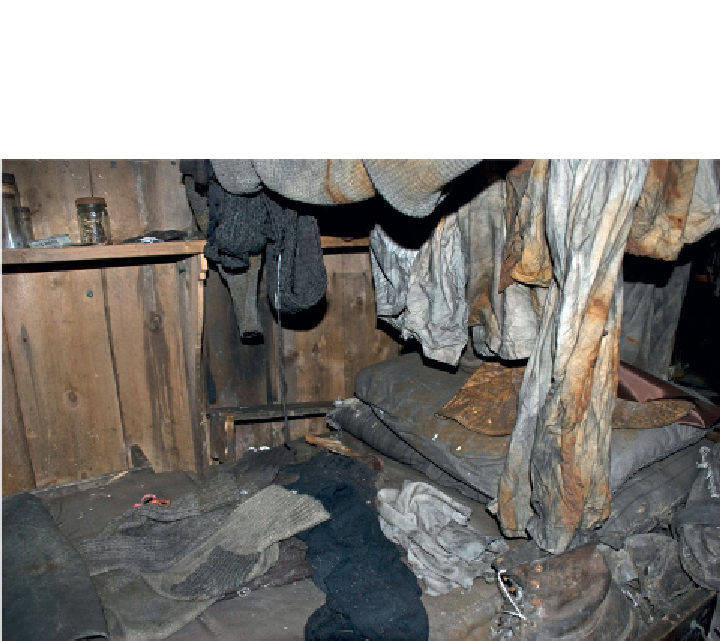Geoscience Reference
In-Depth Information
Figure 8.22
Heroic Age clothing from Shackleton's Ross Sea Shore Party in 1916, still hanging
in the hut at Cape Evans. (Credit: Ralph Maestas, NSF)
field tend to do more physical work than those at the
stations and burn lots of calories just keeping warm. Consequently, food needs to be
high in energy, easily cooked and requiring little fuel. Dehydrated food makes up a
big proportion of meals eaten in the
People working in the
field and ration boxes contain a variety of
groceries including chocolate, rice, biscuits, muesli bars and dried milk, fruit,
soup, meat and vegetables. As backcountry food in general has improved, there has
been an increasing shift to providing more high-nutrition rations that are tasteful
and interesting. Water is obtained by melting snow over a gas- or paraf
n-
red
primus stove and, in order to save fuel, meals need to be quick and easy to
prepare. Even though most of the larger camps will set up a tent to be used as a
kitchen and dining hall, bad weather can force people to stay inside their tents
for days or even weeks on end. Consequently, everyone needs to have emergency
food, water and stoves inside their tent. In huts and tents, a synthetic camping
mat or air mattress is used and two or three huge down-
lled sleeping bags (with
hoods) are stuffed together and campers typically sleep in their clothes when it is
really cold. Washing, both of the body and of clothes, is clearly dif
cult so long-stay
field workers tend to smell rather strongly when they get back to the station!
Staying warm and dry is the
cally
designed for the hostile conditions of Antarctica. A lot more is known today about
first step in being safe and polar gear is speci



Search WWH ::

Custom Search